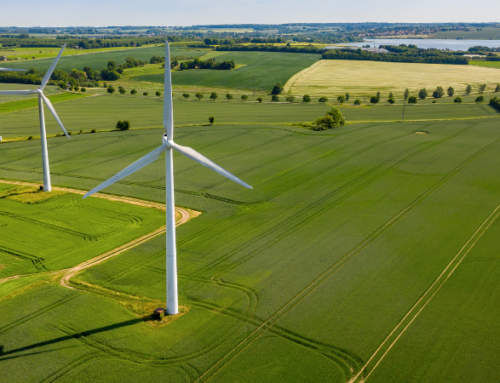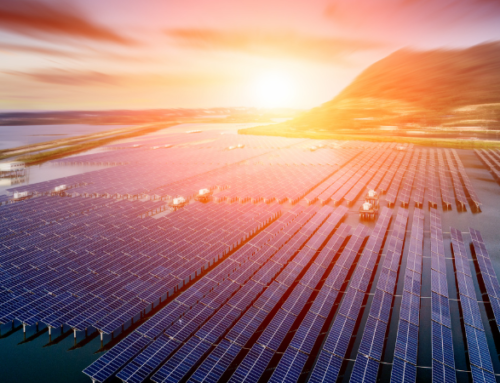In the quest for a sustainable energy future, the global energy landscape is undergoing a monumental shift, paving the way for the new energy economy. At the heart of this transformation are the four fundamental pillars of energy transition:
- energy access
- energy efficiency
- sustainability
- energy security
These pillars not only define renewable energy transition but also embody the challenges and opportunities that nations and industries face in the journey towards a greener, more resilient future. This article delves into each of these pillars, exploring how they will shape a future where energy not only powers our daily lives but does so in a way that promotes sustainability. Let’s explore more.
What Is Energy Transition?
Energy transition refers to the global shift away from fossil fuels to renewable energy sources. This global energy trend is driven by the need to reduce carbon, save the environment, and prolong life on Earth as we know it. Key aspects of energy transition include:
Fossil Fuels to Renewables
Moving away from coal, oil, and natural gas to more sustainable energy sources such as wind, solar, and geothermal are a key focus of the global energy transition.
Decarbonization
Reducing carbon dioxide (CO2) and other greenhouse gases from energy production is critical for meeting the goals set out in international energy agreements, like the Paris Climate Accord.
Energy Efficiency
Implementing energy efficiency technologies in buildings is a key aspect of energy transformation as it drastically reduces energy demand and dependence on fossil fuel generating assets.
Technological Enhancements
Developing and implementing new technologies, like smart meters, AI energy technology, commercial energy storage systems, microgrids, and distributed energy generation plays an important role in reshaping the energy grid and infrastructure.
Energy Policy and Regulatory Changes
New energy policy and regulations are passing that require grid operators, utilities, and businesses to abandon fossil fuels and transition to renewable energy.
Economic and Social Shifts
The energy transition also brings about many economic and social benefits, including new jobs, microgrid powered communities, and a greener planet.
Why Is Energy Transition Important?
The energy transition is critically important for several key reasons including environmental, social, and economic factors. Let’s explore some of the key reasons we need to transition to renewable energy in more detail.
Climate Change
According to the Intergovernmental Panel on Climate Change (IPCC), global CO2 emissions need to fall by about 45% from 2010 levels by 2030 and reach net-zero around 2050 to limit global warming to 1.5°C above pre-industrial levels.
Air Pollution
The World Health Organization estimates that around 4.2 million deaths per year are attributable to ambient air pollution, much of which is linked to energy production and use.
Economic Benefits
Renewable energy sectors are becoming increasingly cost-competitive. For instance, the cost of solar photovoltaics has decreased by about 82% since 2010, as per the International Renewable Energy Agency (IRENA).
Energy Security
Diversifying energy sources through renewables enhances national energy security. Domestic renewable energy provides a more stable and predictable energy supply.
The Four Pillars Energy Transition
In the global quest for a sustainable future, there are four major pillars of energy transition: energy access, energy efficiency, sustainability, and energy security. These pillars represent the cornerstones of the energy transition, each playing a vital role in steering our world towards a more resilient and environmentally responsible future. Let’s explore each pillar in more detail.
1. Energy Access
Energy Access is a fundamental aspect of the energy transition, playing a pivotal role in shaping a more equitable energy economy. In this context, Energy Access refers to the ability of individuals and communities to have reliable, affordable, and adequate access to modern energy services. As of today, a significant portion of the global community lacks access to affordable energy. Addressing this energy inequity is an important part of the energy transition. Today, there are many energy companies focused on bringing clean, low-cost energy to emerging markets. This is being done through the installation of on-site renewable energy as well as transitioning oil-burning power plants to LNG.
2. Energy Efficiency
Energy Efficiency is another foundational pillar in energy transformation. As the world moves towards renewable energy and away from fossil fuel dependence, reducing energy demand becomes crucial. Energy efficiency solutions such as LED lighting, smart meters, IoT thermostats, and demand shaving, allow consumers to drastically reduce peak kW demand. Not only does this help businesses reduce energy consumption, but it also eases demand for electrical grid operators who often rely on fossil fuel generators to meet peak consumer electricity demand.
3. Sustainability
Another key aspect of global energy transition is sustainability. Not only is the market moving towards more sustainable energy generating assets, but there is a key focus on being able to transition to these assets long term. After all, what good is renewable energy generation if it cannot sustain. There are many new technologies helping to promote sustainable energy, such as energy storage systems like batteries. These technologies help to bridge the gap when renewables cannot meet consumer demand.
4. Security
The final pillar of energy transition is the need for more energy security. Today, our centralized energy grid is susceptible to cyber attacks, grid outages, and security threats. When parts of the central electric grid go down, it takes out large groups of consumers. With energy transition, comes a localized generation focus. Not only are renewable energy sources on site and close to offtakers, micro grid technology allows communities and businesses to construct their own local power sources. The transition to these types of energy sources means enhanced security and reliability.
What This Global Transition Means For Energy Customers, Suppliers, and Stakeholders
Renewable energy transformation, marked by a shift towards more sustainable energy sources, brings significant implications for energy customers, suppliers, and stakeholders. The move away from traditional fossil fuels to a system dominated by renewables changes how these parties purchase and consume energy. Here’s how different aspects of the energy transition impact these various groups:
For Energy Customers
Energy transition is having a big impact on consumers of energy. Let’s look at how the different aspects of the transition are impacting customers.
Renewable Energy
Customers are increasingly gaining access to renewable energy sources. This shift can result in more stable and potentially lower energy costs in the long term, as renewables, once established, have lower operational costs compared to fossil fuels.
Energy Prices
Initially, the transition could lead to fluctuating energy prices. Investment in new technologies and infrastructure, coupled with the phasing out of older, subsidized fossil fuel sources, can affect pricing. However, as renewable technologies become more efficient and widespread, prices are expected to stabilize and potentially decrease.
Technology
Advances in smart technology allow customers to be more informed and actively manage their energy use, leading to increased efficiency and cost savings.
For Energy Suppliers and Utilities
Energy suppliers and utilities are being forced to change. From new policies to energy goals, the energy transformation is impacting them greatly.
Adapting Business Models
Traditional energy suppliers and utilities must adapt their business models to accommodate the integration of renewable energy sources. This includes investing in new technologies and infrastructure to manage the intermittent nature of renewables like solar and wind.
Grid Modernization
The transition necessitates a modernization of the energy grid to handle distributed energy resources (DERs) and ensure reliability and efficiency in energy distribution.
Investment in Storage Solutions
Energy storage technologies become crucial to balance supply and demand, ensuring a stable energy supply even when renewable sources aren’t actively generating power (like solar at night).
For Stakeholders and Policymakers
Investors, policymakers and stakeholders in the energy infrastructure will be greatly impacted by the energy sector transition. Let’s explore some of the obvious impacts in more detail.
Policy and Regulation
Stakeholders, including governments and regulatory bodies, need to create and implement policies that support the transition to renewable energy, such as incentives for renewable energy projects and regulations that facilitate grid integration.
Focus on Sustainability
Policymakers must balance the immediate costs of transition with long-term sustainability goals, ensuring that environmental and societal benefits are prioritized.
Investment in Research and Development
Continued investment in R&D is essential for improving renewable energy technologies, making them more efficient, reliable, and cost-effective.
Looking For An Energy Partner To Navigate Energy Transition?
At Diversegy, our group of energy professionals is at the forefront of energy transition in the United States. Not only are our sister companies involved in energy exploration and renewable development, but our team also helps our customers to implement new energy technologies to improve their costs. Contact us today to learn more about how the energy transition can benefit your business or organization.



